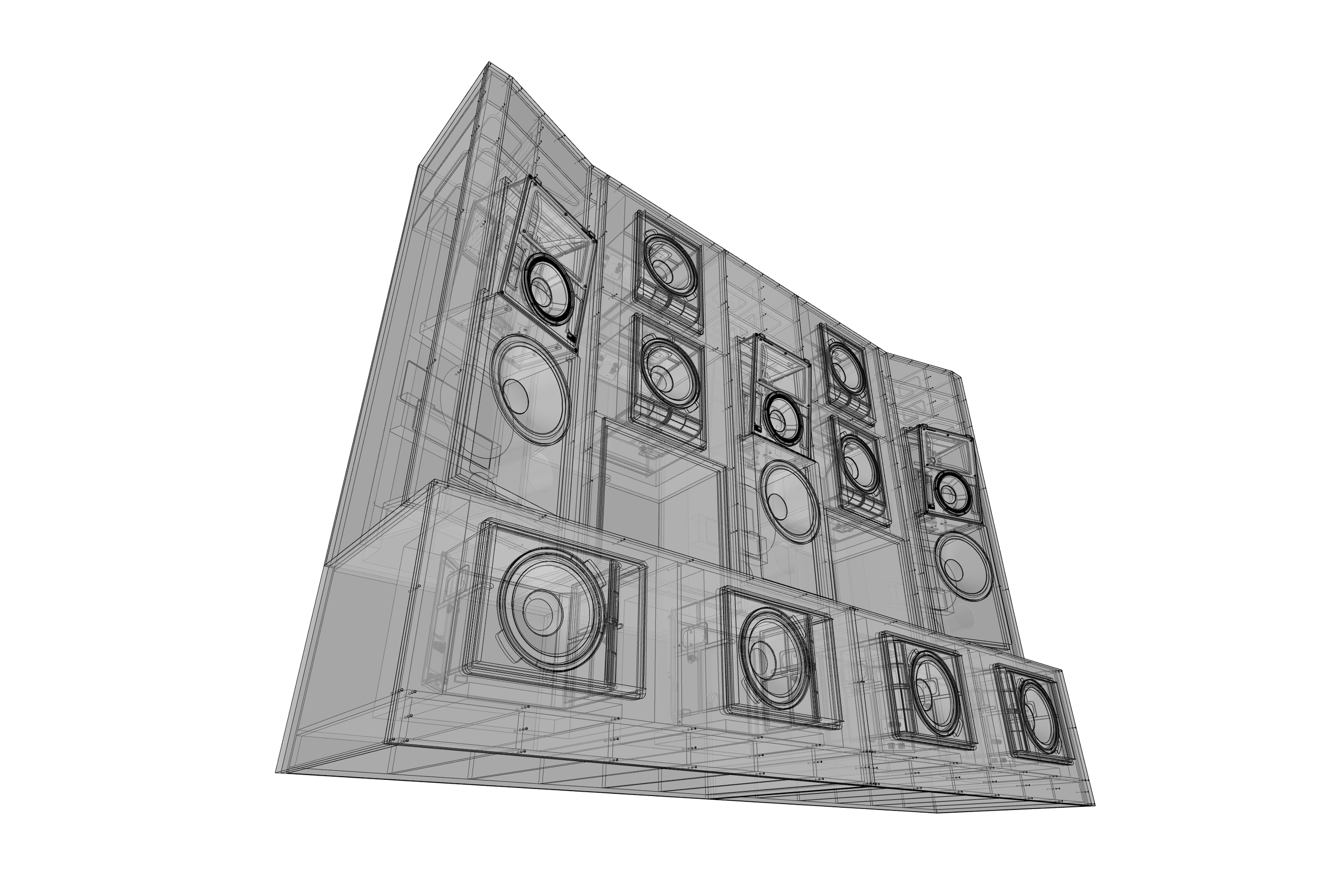The Science and Evolution of Baffle Walls: Why They Matter
The concept of the baffle wall traces its origins to the golden age of cinema, when commercial theaters sought to optimize sound projection in large auditoriums. Borrowing principles from anechoic chambers and studio control rooms, acoustic engineers discovered that placing loudspeakers within or directly against a treated wall helped eliminate rearward sound radiation, improve bass response, and tighten imaging. This concept, known as “infinite baffle” mounting, minimizes acoustic diffraction and allows low frequencies to propagate forward with far greater accuracy and power.
As high-performance private cinemas began to emulate the sonic standards of professional screening rooms, the baffle wall evolved into an essential architectural element. Beyond speaker positioning, modern baffle walls now integrate acoustic absorption, speaker isolation, and precise speaker aiming to achieve reference-level audio reproduction. They eliminate comb filtering and first reflections, resulting in smooth frequency response and pinpoint imaging at the listening position.
In science terms, baffle walls help enforce minimum phase behavior from loudspeakers, aligning time-domain and frequency-domain responses—crucial for creating a cohesive soundstage and maintaining clarity even at high volumes. The structure not only hides speakers behind acoustically transparent fabric but also houses the necessary infrastructure—brackets, damping materials, isolation mounts, and ventilation systems—that support today’s most demanding cinema-grade systems.
In short, the baffle wall is more than a backdrop—it is the foundation of great sound. It bridges architecture and acoustic science to ensure every note, whisper, and explosion reaches the audience exactly as the filmmaker intended.
Introduce your brand
Take a minute to write an introduction that is short, sweet, and to the point. If you sell something, use this space to describe it in detail and tell us why we should make a purchase. Tap into your creativity. You’ve got this.


